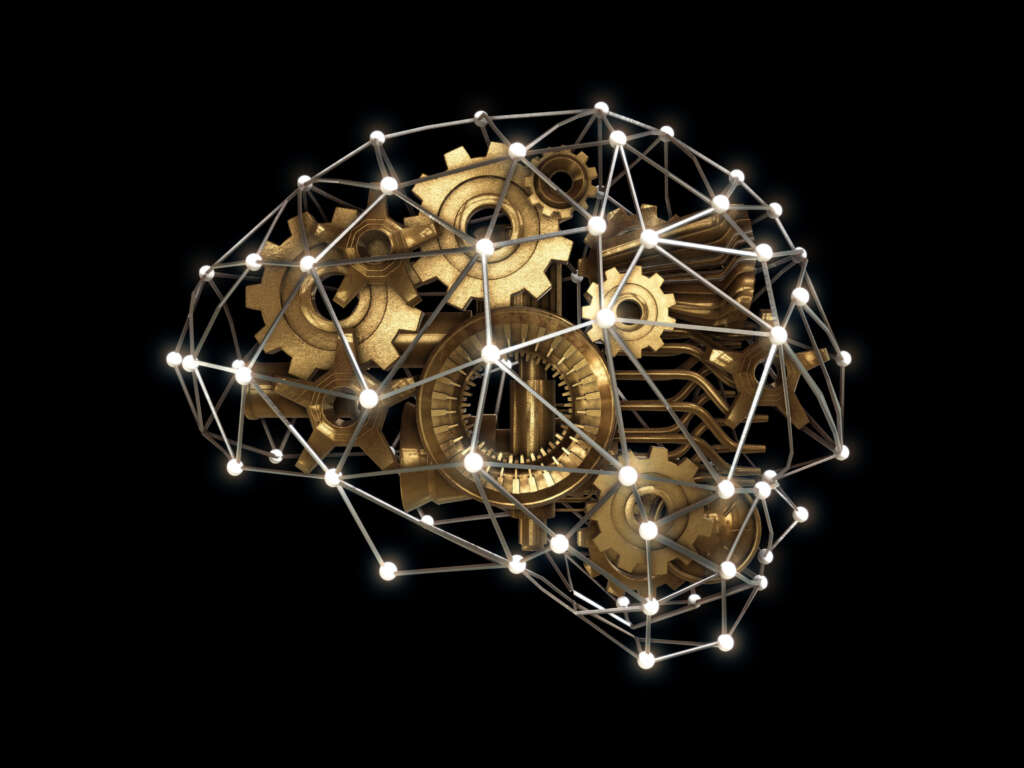Imagine a world where your business data is more than just numbers on a spreadsheet. It’s a dynamic asset that drives growth and innovation. This is the reality today, thanks to AI-driven business insights. But is your business ready to use this data for growth?
The need for enhancing business analytics with AI is growing fast. This change is bringing a big shift in how we handle and process data. AI can now automate tasks like finding unusual patterns and predicting trends. This means businesses can work more efficiently. Reports show that using AI business intelligence can make your operations much better. It helps analysts focus on the important tasks, not just the simple ones.
Gartner’s experts say we’re seeing big changes in AI use. By 2026, half of NLP use cases will use foundation models, up from almost nothing in 2022. This shows a big move towards AI analytics solutions. Also, AI is changing how we personalize customer experiences. But, having the right data infrastructure is crucial for AI success.
AI in business analytics is becoming a reality, not just a dream. Gartner predicts AI will create nearly 15% of new applications by 2027. This shows AI’s huge potential in changing and improving analytics. Will your business lead or follow this AI revolution?
AI can analyze big datasets and provide accurate forecasts and personalized experiences. The question is, how will you use AI to grow your business? Does your company have the vision to use the full potential of AI in business analytics?
Adopting AI is a journey that requires a strong team and the right infrastructure. It also needs a culture that values data-driven innovation. Companies must address issues like data quality, skill gaps, and integration. The winners will continuously improve their AI use and bring new business value through innovation and efficiency.
In today’s complex business world, AI is essential. It’s not just an option; it’s a must for staying competitive. Has your business prepared for this AI-driven change? Let’s explore how AI is changing business analytics and how you can benefit from it.
Unveiling the Power of AI in Data Analysis
The use of AI in data analysis is more than a trend. It’s a big change that’s changing how industries work with big data. AI-driven data analytics are making a big difference by spotting unusual patterns in finance, like credit card fraud. They also predict product demand in retail, helping with inventory and promotions.
AI-powered analytics tools are great at handling data in real-time, which is key for today’s fast business world. They help reduce downtime and increase efficiency, keeping businesses ahead. AI also makes data tasks easier, from cleaning data to complex modeling, saving time and reducing mistakes.
AI-driven data analytics keep getting better over time. They use machine learning to find patterns, adapt to new data, and improve decision-making. This means better predictions and solutions for industries like healthcare and finance.
AI is changing the game by dealing with huge amounts of data like texts, images, and sensor readings. It brings out insights that were hard to get before.
Using AI in data analysis is all about making data better and making decisions based on data. AI-powered automated reporting tools let businesses make detailed reports quickly, making important data easier to get.
The big change brought by AI-driven data analytics is making businesses work better and more innovatively. It’s pushing industries towards new, smarter ways of working.

AI in Business Analytics: A Game Changer for Decision-Making
Today, the use of AI in business analytics is changing the game. A McKinsey survey found that 63% of companies using AI for business analytics in 2023 saw their revenue grow. These companies use AI to make sense of complex data quickly, leading to better strategies.
Tools like Google Analytics and Tableau speed up data analysis. This lets companies make quick, informed decisions with up-to-date data. Platforms like IBM Watson and Salesforce Einstein predict customer behavior and market trends. This helps with marketing and managing inventory.

AI does more than just improve processes; it opens up new chances for growth and connecting with customers. It helps with everything from supply chain to customer service, making things more efficient and customers happier. As companies grow, using AI for analytics is key to staying ahead and being innovative.
AI also makes workers more productive and efficient. Accenture predicts that by 2035, AI could double efficiency and increase profitability by 38%. This shows how important it is to use AI well in business.
To get the most out of AI, companies need to keep training their AI with the right data. They should make sure it fits with their goals. Regularly checking and adjusting AI results is also key. With these steps, AI becomes a crucial part of business strategy. It helps make decisions, innovate products, and personalize customer experiences, leading to growth and a stronger market presence.
Integrating AI into Business Intelligence Strategies
Combining AI business intelligence with traditional business methods is more than just upgrading technology. It changes how businesses get AI-driven business insights. AI solutions handle data from inside and outside the company with unmatched consistency and reliability.
Predictive analytics, powered by AI, takes these strategies further. It lets businesses not just react to trends but also predict future changes. AI uncovers patterns and opportunities that humans might miss.
Personalization is key in today’s fast-changing market. AI can analyze and use customer data to make products and services more appealing. This means happier customers and more engagement. AI also automates tasks like reporting, freeing up staff for more strategic work.
Fraud detection is another big plus of AI analytics solutions. AI looks at transaction data to spot fraud, making operations safer and more secure. This protects both the company and its customers.
As AI becomes part of business intelligence, it makes data more accessible and decision-making smoother. It also reduces human bias. This helps with everyday decisions and long-term strategies, thanks to ongoing AI analysis.
Integrating AI requires careful planning and choosing the right tools. Companies must ensure their AI systems are transparent and ethical. This keeps trust with stakeholders and helps use AI for real and fair insights.
To get the most from AI-driven business insights, businesses should see AI as a boost to their current systems. The secret is to use AI in a way that matches business goals. This leads to better predictions and smarter decisions.

Maximizing AI’s Impact on Enhancing Business Analytics
Adding Artificial Intelligence (AI) to business analytics is more than just a tech upgrade. It’s a big change that helps both new and big companies work with huge amounts of data better. With AI, companies can get insights faster and more accurately than before.
Now, AI tools are key in handling big datasets, finding hidden patterns, and giving real-time insights. This is vital in fast-paced sectors where quick and precise decisions are crucial. It helps businesses stay ahead in a changing market.
AI in business analytics does more than just analyze data. It uses predictive analytics to forecast market trends and customer behavior accurately. Tools like TensorFlow and PyTorch help businesses predict market needs and adjust their plans.
But, adding AI to business analytics needs a good plan. Companies should identify critical areas where AI can add the most value. They need to pick the right tools that fit their goals. It’s also important to keep data safe, fill skill gaps, and use AI ethically.
To really boost business analytics with AI, companies should use tools like IBM Watson and Google Cloud Natural Language. These tools automate analysis and improve customer service with personalized experiences. Updating AI models with new data and business changes keeps insights useful and drives important business results.
The mix of AI analytics tools in business operations speeds up decision-making. It also makes businesses more efficient, quick to respond, and adaptable to changes. This leads to more innovation and a strong competitive edge.
Revolutionizing Analytics with AI-Powered Tools
The use of AI in business analytics is changing the game across many sectors. It lets companies make decisions faster by processing data in real-time. AI tools use smart algorithms to spot patterns, which is key in healthcare for predicting health outcomes and in finance to catch fraud.
AI for analytics has led to tools like IBM Watson Health. It looks at huge amounts of medical data to help with treatment plans. Facebook uses AI too, making big data management better by targeting ads and making content more precise.
AI also makes things run smoother by doing some tasks on its own. For example, Trifacta automates data work, letting analysts focus on big decisions. Tools like Tableau change how businesses see data, offering insights through AI-powered dashboards in real time.
American Express and Netflix show how AI-driven business insights can fight fraud and make recommendations more personal. In retail and finance, AI is changing how they forecast, making stock levels and market trends more accurate.
But, companies need to use AI wisely to avoid too much reliance on automated guesses. They need to keep an eye on AI and fix any biases in data to use AI well without losing ethics or accuracy.
In short, the mix of AI and data analytics is changing industries for the better. It’s pushing them towards more innovative, efficient, and strategic futures. By using AI tools, businesses can find and use new opportunities with speed and confidence.
Addressing Challenges and Future Prospects in AI Analytics Solutions
The rise of AI analytics tools is changing how businesses make decisions. But, there are hurdles to overcome. Getting access to good data is a big issue. Without it, AI can’t work well.
Places like Georgetown University are leading the way by training skilled workers. But, the industry needs more experts. We must focus on improving data management and training to make AI analytics work for everyone.
Looking ahead, AI analytics will change a lot. By 2024, AI will make futures from big data. This change will make data more important in companies, thanks to new AI technologies.
Companies need to protect their data more as it grows. They should also keep up with new AI tools like AutoML. These tools make data easier to understand, making analytics easier for everyone.
AI in data analysis has huge potential but also challenges. It can help predict and shape business outcomes. But, there are ethical issues, like AI bias. Leaders must be careful to use AI for good, making businesses better for everyone.



